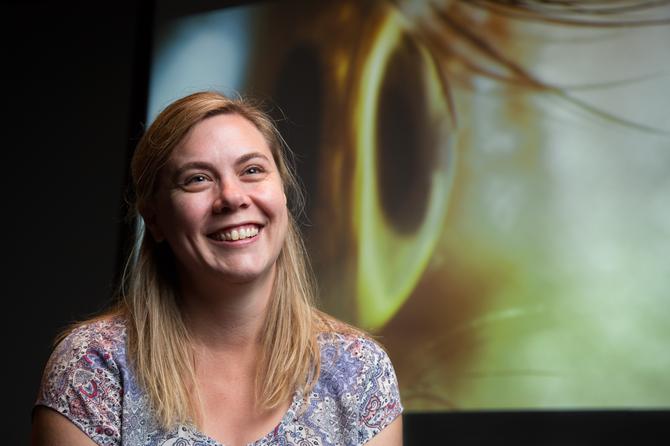Writing, reading, pouring a cup of coffee– all tasks that seem inconsequential until our sight is at risk.
At least one in seven Australians have a genetic disposition to
developing blinding eye disease, but the University of Tasmania’s research could reduce that risk.
Associate Professors Kathryn Burdon and Alex Hewitt (University of Tasmania Menzies Institute for Medical Research) are part of an
international consortia researching the role of genes in the development of eye
diseases such as glaucoma and macular degeneration. Blindness from some types
of glaucoma – which leads to progressive loss of vision
caused by damage to the optic nerve at the back of the eye –
is preventable if it is found and treated early.
“Our research for a recent paper compared the genetic risk factors of over 1000 people with advanced glaucoma against several thousand more without the condition. We found three new regions which conferred an increased risk of glaucoma,” Associate Professor Burdon said.
Many cases of vision loss are not preventable but for the diseases that are, it will be vital to be able to predict who is at risk and would benefit from early preventative measures.

Associate Professor Kathryn Burdon, Menzies Institute for Medical Reserch.
“While in some cases we can recognise this increased risk, we still don’t understand the mechanism that causes the disease, so we are conducting further studies to uncover other factors, like eye pressure and the rate of vision loss to hopefully understand the disease progression more fully.”
Associate Professor Hewitt said being able to conduct genetic testing in relation to glaucoma would mean that patients could be appropriately monitored for signs of disease development and this would provide a better chance of tackling the disease early and making real changes to the lives of hundreds of thousands of Australians.
A PhD researching eye genetics at the University of Tasmania established Associate Professor Burdon’s career credentials – providing a footing for her to build her career at Wake Forest University in the United States and Flinders University in South Australia before returning to her home university to continue her career.
Associate Professor Hewitt, who was the National Health and Medical Research Council’s (NHMRC) top-ranked Practitioner Fellow applicant for 2015, first studied medicine at the University of Tasmania before completing his PhD at Flinders University in Adelaide. After an ophthalmic genetics fellowship at the Lions Eye Institute in Perth, and then working at the Centre for Eye Research Australia, University of Melbourne, he returned to the University of Tasmania as a joint appointment between Menzies and the School of Medicine.
This research was supported by funding from the National Health and Medical Research Council (NHMRC).
Find this work eye-opening? Apply now to become a research student.
